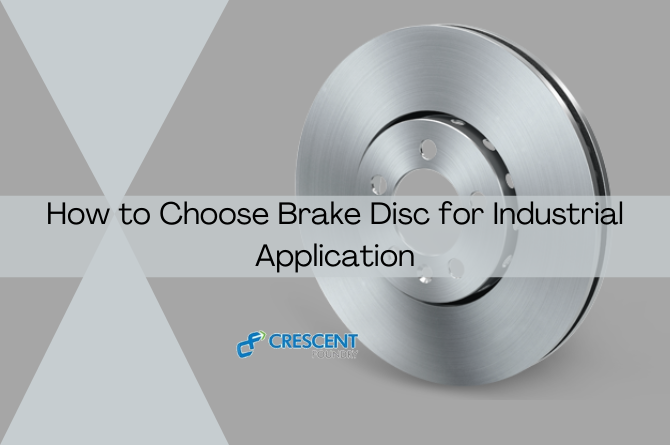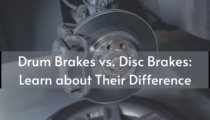The advancement in technology has brought about several transformations in…

How to Choose the Right Size Brake Disc for Industrial Applications
Automotive industries involve several systems together to keep the operations running. Brake discs are an integral component of an automotive machine’s braking system. The brake disc, along with callipers and brake pads together create friction to bring the rotation to a standstill, or reduce the speed. Brake disc manufacturers in India produce automotive and industrial calliper disc brakes of several configurations, sizes and material.
Why do industrial applications need additional braking power?
Several industries require brake applications, such as medical equipment, factory automation, elevators, construction equipment, and escalators. These industries often employ machineries that have high torque, energy, and tension. Such machineries require additional braking force for stopping the rotation of the wheels. The wheels do not have enough brake force to create the requisite friction to put a halt to the running wheel.
- A vehicle requires sufficient stopping power.
- The phenomenon of brake fade is excessive, where the braking power reduces due to repetitive brake usage.
Which Elements Determine The Braking Power Of The Brake?
The brake disc has several elements that determine the braking power. Brake disc suppliers in India produce several options for configuring the brake disc as per application requirements.
Rotation: Some applications have high torque due to the excessive rotational motion. Brakes have to be at par with the speed of the application to be able to successfully bring to a halt.
Recoil: In electromagnetic disc brakes, the recoil or backlash is the amount of movement that happens between the brake hub and friction disc. Low torque applications require fixed positioning and hence, zero backlash brakes are favoured.
Material: Since a good amount of heat is generated when brakes are applied, the material selection has to be right. Cast iron brake discs offer appropriate thermal conductivity, durability, friction, less wear rate as well as effective corrosion strength while being cost-effective.
Size: The size of the brake disc is crucial for the effective functioning of the brake. The size of the brake to the torque is essential to judge the competency of the braking power of the brake to change the motion of the rotating wheel.
Several other factors come into play when determining the efficiency of an industrial application brake.
How can Brake Disc Sizing affect Braking Power?
There are numerous uses for disc brakes. In industrial uses, heavy moving units can be quickly slowed down, held, and stopped. They are, therefore, perfect for applications that need tensioning, halting, or significant torque. The energy generated during braking is captured by calliper disc brakes, which then release it as heat.
One of the significant elements that affect the brake performance is the size of the brake disc. Different applications require varying brake disc sizes, to meet the diverse performance requirements. Desired stopping and holding requirements can be achieved by varying the disc diameter, calliper count as well as the actuating pressure.
How To Choose The Brake Disc Size?
Industrial brakes can deliver quick stopping power or dependable tension control. However, finding the right brakes can be difficult due to the numerous application-specific parameters that must be taken into account. Brake disc manufacturers in India supply brake rotors of varying sizes to cater to several industries, including the automotive industry.
Recommended Reading: Types Of Flywheels And Their Usage
Smaller disc diameter
For gradual resistance or the generation of friction, smaller sized brake discs are preferred. Due to the smaller surface area, the discs have fewer callipers to squeeze onto the rotors using the brake pads. They are useful when there is gradual stopping motion or as an accessory to a disc with larger diameter.
Larger disc diameter
Larger disc has a larger diameter which allows maximum grip after the first bite. This causes the application to stop earlier than a smaller disc diameter. In addition, when the brakes are applied, plenty of heat is generated. Larger disc rotors have more surface area to dissipate the heat and therefore does not overheat. This results in better braking power. Larger disc rotors also have the advantage of more distance between the contact point of the rotor and pad from the axle. As a result, more torque is generated – which facilitates the halting of the application. Larger discs also have a heavier mass which aids in stopping the motion.
The brake’s right size will provide braking performance and power without compromising cost-effectiveness. Both the correct brake and the proper disc diameter are required for effective braking results. From dynamic pneumatic and hydraulic to lever mechanically operated and spring applied brakes, brake disc suppliers in India offer solutions that can be customised to fit the desired application.



